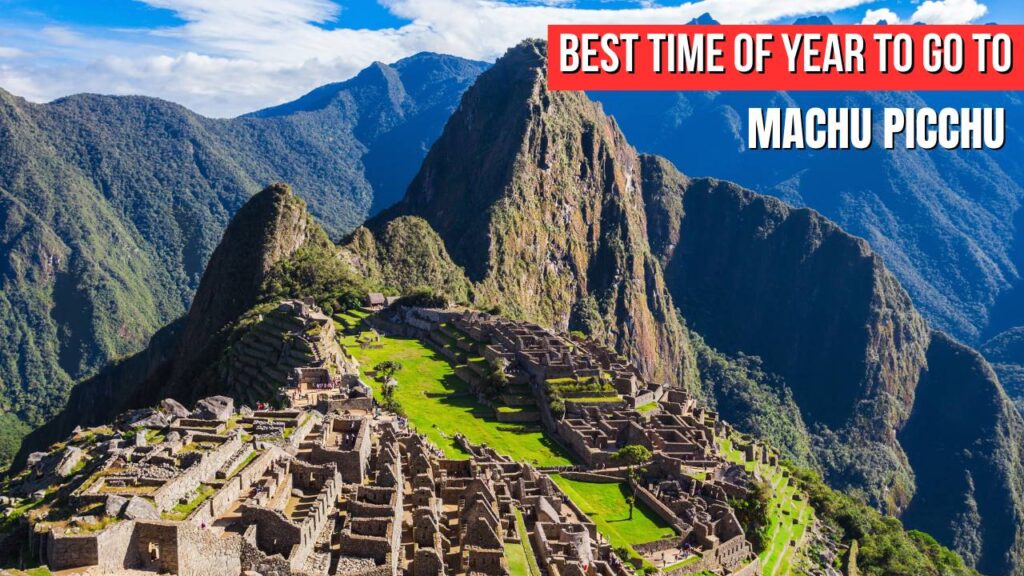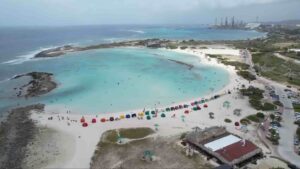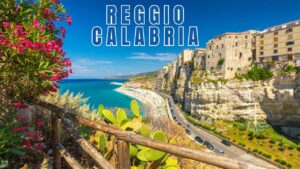Planning a trip to Machu Picchu? Pick the best time of year to go for ideal weather, fewer crowds, and budget-friendly options with expert travel tips.
Planning a journey to one of the world’s most iconic archaeological wonders calls for perfect timing, especially when the destination is as majestic and weather-sensitive as Machu Picchu. The best time of year to go to Machu Picchu depends on what kind of experience you’re seeking—whether it’s clear mountain views, fewer tourists on the trails, or pleasant hiking conditions. From seasonal weather patterns to the impact of peak travel months, every detail plays a role in shaping your adventure through Peru’s breathtaking Sacred Valley. This guide shows the optimal travel seasons, how to avoid the crowds, and expert tips to help you make the most of your visit to this UNESCO World Heritage site.
How to Get to Machu Picchu: Trains, Buses, and Trekking Options Explained
Reaching Machu Picchu involves a multi-step journey that starts in the historical city of Cusco, located in the heart of the Peruvian Andes. This ancient Inca capital is the most common starting point for travelers and offers various ways to reach Aguas Calientes (also known as Machu Picchu Pueblo), the closest town to the archaeological site. Seek convenience, adventure, or a more immersive cultural experience, there is an option for every type of traveler.
By Train: Most Convenient and Scenic Route
Traveling by train is the most popular and comfortable way to reach Machu Picchu. Two major operators—PeruRail and IncaRail—offer frequent services between Cusco or Ollantaytambo and Aguas Calientes. Both companies provide several classes of service, from budget-friendly carriages to luxury trains with gourmet meals, live music, and panoramic viewing windows.
PeruRail offers trains such as the Expedition, Vistadome, and the ultra-luxurious Belmond Hiram Bingham, which includes fine dining and open bar service.
IncaRail offers The Voyager, 360° Train, and First-Class options, each designed to enhance your journey with stunning views of the Sacred Valley and the winding Urubamba River.
The full journey from Cusco takes about 3.5 to 4 hours, while boarding from Ollantaytambo—which many travelers prefer due to its shorter duration—takes roughly 1.5 hours. These trains are not just transportation—they are a memorable part of the Machu Picchu experience itself.
By Bus and Train Combination: Budget-Friendly and Flexible
A more cost-effective alternative involves taking a bus or shared van from Cusco to Ollantaytambo, followed by a train to Aguas Calientes. The drive to Ollantaytambo takes about 1.5 to 2 hours, and it’s a scenic route through the Sacred Valley, often lined with mountains, local markets, and farmlands.
This combo allows more flexibility and can be arranged through local agencies or independently. Many travelers choose to spend a night in Ollantaytambo, as the town itself is rich in Inca history and features its own set of impressive ruins. From there, catching a train to Aguas Calientes the next morning can provide a more relaxed and culturally rich experience.
By Trekking: Adventurous Paths for Nature and Culture Enthusiasts
For travelers seeking a deeper connection with nature and history, several multi-day treks lead to Machu Picchu. Trekking routes offer spectacular scenery, ancient ruins, and the chance to walk in the footsteps of the Incas.
Inca Trail
- The most iconic route, this trail takes about 4 days and 3 nights.
- It is heavily regulated and requires a permit, often sold out months in advance.
- Hikers pass through cloud forests, mountain passes, and numerous archaeological sites before reaching Inti Punku (Sun Gate) at sunrise—a dramatic and unforgettable first view of Machu Picchu.
Salkantay Trek
- A high-altitude alternative, the Salkantay Trek typically spans 5 days.
- This route offers panoramic views of snow-capped peaks, lush jungles, and glacial lakes.
- It is less crowded and does not require a government permit, making it more accessible to last-minute planners.
Lares Trek
- Ideal for cultural immersion, the Lares Trek passes through remote Andean villages where travelers can interact with locals and observe traditional lifestyles.
- It usually takes 3 to 4 days and is known for its peaceful, less-touristed trails.
Inca Jungle Trek
- For thrill-seekers, this multi-adventure trek combines mountain biking, river rafting, hiking, and even zip-lining.
- It lasts 3 to 4 days and is a fun, dynamic way to experience the jungle terrain before arriving at Aguas Calientes.
Trekking options typically include meals, guides, porters, and camping equipment, and can be tailored for various fitness levels. Acclimatization in Cusco is strongly recommended before attempting these high-altitude hikes.
What Is the Best Time of Year to Go to Machu Picchu for Ideal Weather?
Planning a trip to Machu Picchu isn’t just about booking tickets—it’s about timing your visit to align with the best possible weather conditions. This ancient Inca city sits in the Andean high jungle, where weather patterns are influenced by both mountain and tropical climates. Understanding the seasonal differences can significantly enhance your experience, whether you’re hiking the Inca Trail or simply exploring the ruins.
Dry Season (May to September): The Most Popular Time to Visit
The dry season, running from May through September, is widely considered the best time of year to visit Machu Picchu. During this period, the region enjoys:
- Clear skies and abundant sunshine – making it perfect for photography and sightseeing.
- Daytime temperatures hovering around 65–70°F (18–21°C) – ideal for trekking and walking tours.
- Lower humidity levels – reducing the chance of fog that can obscure views of the site.
Because of the pleasant conditions, the dry season attracts the highest number of visitors. June, July, and August are especially busy, as they coincide with summer holidays in North America and Europe. Expect larger crowds and higher prices during this peak tourist window.
Travelers should be prepared for cooler nights, especially in June and July, when temperatures can drop below freezing at higher altitudes. Packing layers, including a warm fleece or jacket, is essential if you plan to stay overnight in Cusco, Ollantaytambo, or camp along one of the trekking routes.
Rainy Season (November to March): Lush Scenery and Fewer Tourists
The rainy season begins in November and continues through March, bringing frequent showers and higher humidity to the region. Rainfall peaks in January and February, with trails often becoming muddy, slippery, and more challenging to navigate.
That said, there are some notable advantages for travelers during this time:
- Fewer crowds – Machu Picchu is noticeably quieter, allowing for a more tranquil experience.
- Vibrant greenery – The surrounding forests and hills are at their most lush and photogenic.
- Discounted rates – Accommodations, tours, and even some train tickets are more affordable due to lower demand.
Visitors should be cautious. Landslides and transport delays are more common during heavy rains, especially along the train route to Aguas Calientes. The Inca Trail is closed every February for annual maintenance, so trekkers should plan around this restriction if they’re set on that specific route.
Shoulder Seasons (April and October): Balanced and Beautiful
Looking for a sweet spot between weather and crowds, the transitional months of April and October are excellent times to visit Machu Picchu. These shoulder months offer a balance of sun and rain, with generally mild temperatures and fewer tourists compared to the peak dry season.
- In April, the landscape is still green and vibrant from the rainy season, but the skies start to clear up, making it a photogenic and peaceful time to visit.
- In October, the weather remains relatively dry, though you may start to notice the first signs of the coming rainy season, particularly in the afternoon.
Both months are ideal for photography, trekking, and sightseeing, and they offer more flexible booking options for accommodations and permits.
Best Time of Year to Go to Machu Picchu to Avoid Crowds
Machu Picchu is a stunning destination that attracts over a million visitors annually. If you’re looking to experience this wonder without the usual tourist rush, timing your visit is key.
Ideal Months: April, May, September, and October
These are known as the shoulder seasons. During these months, the weather is generally clear and pleasant, with significantly fewer tourists than the peak season. April and May offer lush scenery after the rainy months, while September and October provide good visibility and fewer tour groups as the dry season winds down.
Avoid: June to August
These months are the busiest, coinciding with summer vacations and Peruvian holidays. While the weather is ideal for hiking and photography, Machu Picchu becomes crowded, and it’s harder to find quiet moments for reflection or photos without tourists in the frame.
Low Season: January and February
These are the rainiest months, which discourages many tourists. But if you don’t mind wet conditions and potential train delays, you’ll enjoy much more solitude at the site. Note: The Inca Trail is closed in February for maintenance.
Best Days: Tuesdays and Wednesdays
Weekends and Mondays tend to be packed, especially with local tourists. Midweek visits are typically calmer, allowing for a smoother, more peaceful experience.
Best Time of Day: Early Morning or Late Afternoon
The 6 AM to 8 AM slots offer cool weather, soft morning light, and the fewest people. 2 PM to 4 PM is also quieter, as many day-trippers begin to leave. Booking early entry times or late afternoon visits provides the most tranquil experience inside the site.
When Is the Cheapest and Best Time of Year to Go to Machu Picchu?
Budget is a top priority, the low season (November through March) is generally the best time of year to go to Machu Picchu. During this time, many hotels in Cusco and Aguas Calientes offer discounts, and domestic flights are cheaper. Train tickets may also be less expensive and more readily available.
Be mindful that February has limited trekking options due to trail closures, and heavy rainfall can disrupt plans. If you want a balance between affordability and experience, consider traveling in late March or early April, when prices are still low but the weather begins to improve.
Booking tickets well in advance for trains, accommodation, and Machu Picchu entrance passes can further help reduce costs and ensure availability.
Best Time of Year to Go to Machu Picchu for Hiking the Inca Trail or Alternative Treks
For hiking enthusiasts, the dry season from May to September is the prime time to embark on the Inca Trail or visit alternative routes to Machu Picchu. These months offer clear skies, dry trails, and breathtaking views of the Andes, making for an unforgettable trekking experience.
Inca Trail
Permits sell out months in advance, especially for May through August, so early booking—at least 6 months ahead—is essential. June and July are peak months due to sunny conditions and Peruvian national holidays, making the trail busier but vibrant with cultural festivities. Early morning departures are recommended to avoid crowds at the Sun Gate.
Salkantay Trek
This scenic high-altitude route is ideal between April and October. Offering panoramic views of glacial peaks and cloud forests, the Salkantay Trek is a fantastic alternative for those who didn’t secure Inca Trail permits. With no permit restrictions, it offers more flexibility and a challenging but rewarding experience.
Lares Trek
Best done in the dry season (May–September), but thanks to its lower elevation, it’s accessible nearly year-round. This culturally rich route passes through remote Andean villages, offering a deeper insight into traditional Quechua life. Cooler temperatures at night are expected, especially in June and July.
Inca Jungle Trek
Perfect for thrill-seekers, this multi-activity trek includes biking, zip-lining, and hiking. The dry season is the best time to avoid slippery roads and ensure safe adventure travel. The Inca Jungle Trek offers a more tropical climate, so packing layers is essential.
Morocco Itinerary: 10 Days of Incredible Landscapes, Culture & Adventure
Choosing the best time of year to go to Machu Picchu can make all the difference, whether you’re chasing the perfect photo, aiming for a peaceful hike, or seeking a great deal. Whenever you go, respect the site and its environment so future generations can enjoy its magic too.
FAQs
1. What is the best time of year to visit Machu Picchu?
The best time to visit Machu Picchu is during the dry season, from May to September. These months offer clear skies, stable weather, and minimal rainfall, making it ideal for trekking and exploring the site.
2. Is there a rainy season at Machu Picchu?
Yes, the rainy season at Machu Picchu lasts from November to March. During these months, heavy rain can make hiking trails slippery and visibility poor. The Inca Trail is also closed for maintenance in February.
3. When is the best time for hiking the Inca Trail?
The best time to hike the Inca Trail is between May and September when the weather is dry and the trails are more accessible. It’s also the peak trekking season, so book permits early.
4. What months are the least crowded at Machu Picchu?
The least crowded months to visit are typically April and October. While the weather is still favorable, these months fall outside the peak tourist season, so you can enjoy fewer crowds and better prices.
5. Is there a particular time to visit for the best weather?
For the best weather—mild temperatures and clear skies—the dry season from May to September is ideal. Daytime temperatures are pleasant, and there is less chance of rain, especially during the peak months of June and July.
6. When should I visit to avoid high prices?
To avoid high prices, visit during the shoulder months—April, May, September, and October. These months offer good weather and fewer tourists, and you may find discounts on tours and accommodations.
7. Is it possible to visit Machu Picchu during the rainy season?
Yes, it’s possible to visit during the rainy season (November to March), but the experience might not be as enjoyable. Trails can be muddy and slippery, and some routes may be closed due to weather conditions. It’s also essential to pack waterproof gear.
8. When is the best time to visit Machu Picchu for hiking alternative routes?
The best time for alternative hikes, such as the Salkantay Trek or Lares Trek, is also the dry season from May to September. These months provide stable weather and safer conditions on the trails.
9. When is the cheapest time to visit Machu Picchu?
The cheapest time to visit Machu Picchu is during the rainy season (November to March), when hotel rates, flights, and tour prices are typically lower. You may have to contend with poor weather conditions.
10. Is February a good time to visit Machu Picchu?
February is not recommended for trekking to Machu Picchu. The Inca Trail is closed for maintenance, and heavy rains can make other routes unsafe. It can be a good time to visit by train or for those looking to avoid crowds.






